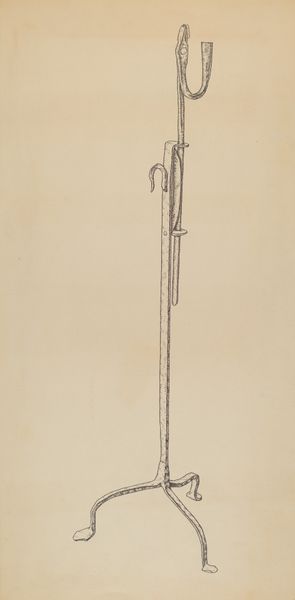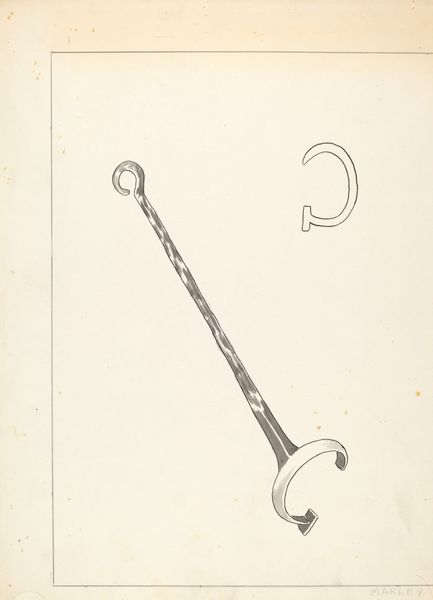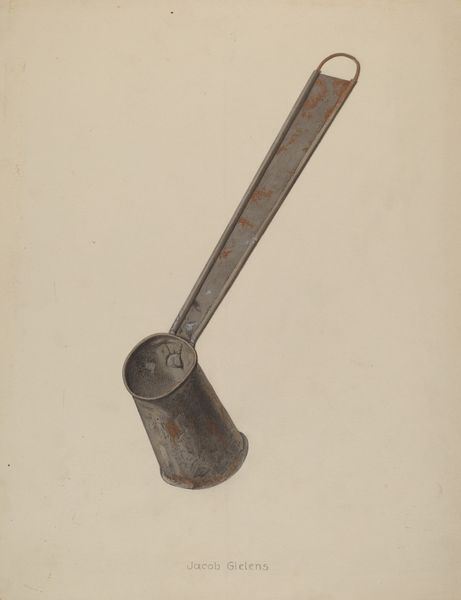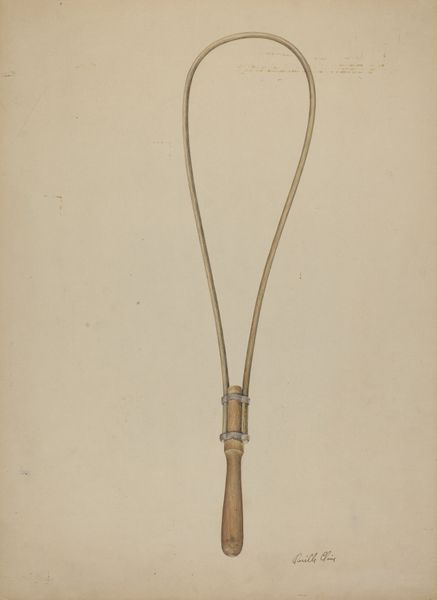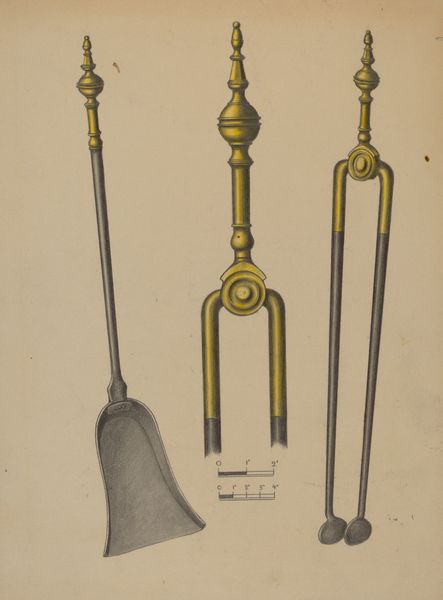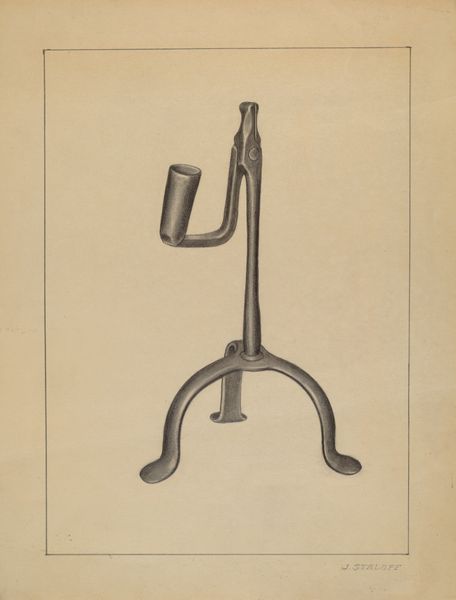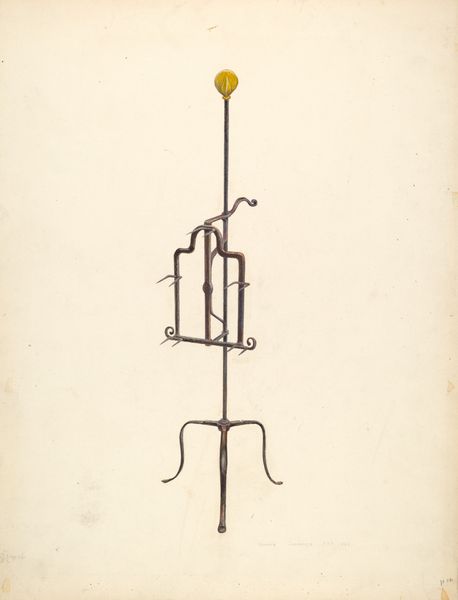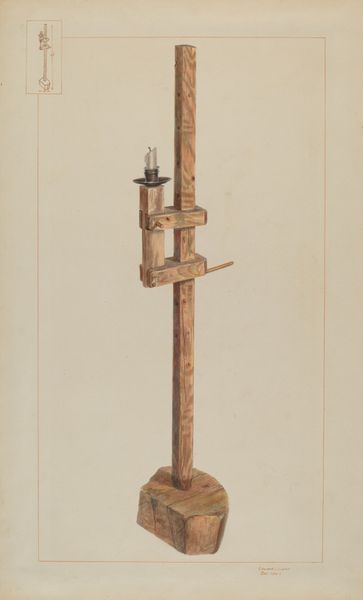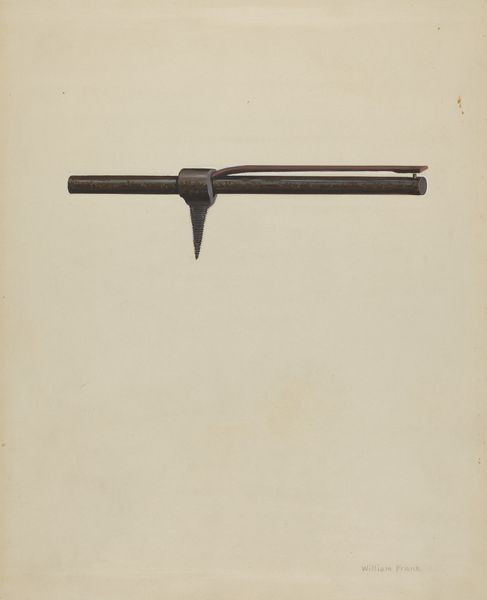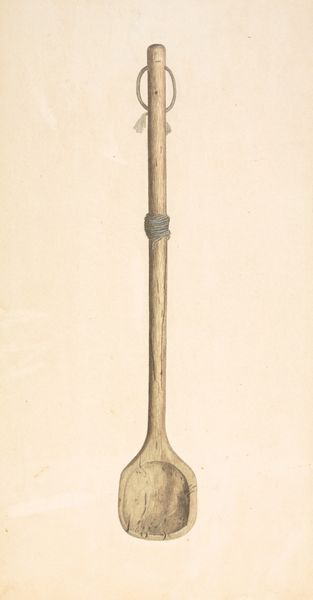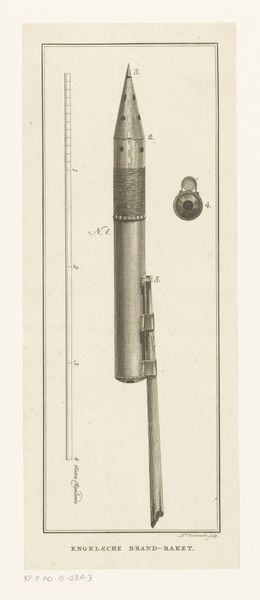
drawing, watercolor
#
drawing
#
watercolor
#
watercolour illustration
Dimensions: overall: 22.5 x 35.6 cm (8 7/8 x 14 in.)
Copyright: National Gallery of Art: CC0 1.0
Curator: Edward L. Loper created this delicate watercolor and drawing circa 1938 titled "Baritone Horn." What strikes you most about it initially? Editor: The patina. That verdigris coloring hints at years of use, stories whispered, a lived existence beyond just a musical instrument. It speaks to something human, even lonely. Curator: I agree. The visual language connects to narratives around access to education and creative expression, particularly for marginalized communities during that period. Musical instruments held symbolic weight, offering avenues for cultural identity and self-expression. Think of the role music played in the Harlem Renaissance. Editor: Absolutely. Considering the historical backdrop, what were the popular perceptions of brass instruments in the 1930s? They symbolize patriotism, certainly, but were they also coded by race or class at that time? Curator: Undoubtedly. Instruments like the baritone horn, were prevalent in school bands and community ensembles but access and opportunities weren’t equitable. Looking closely, one recognizes both care and wear on this instrument, maybe the maker wasn't well known? Editor: The almost scientific precision in its rendering—almost clinical in the bright background—adds an intriguing layer. It prompts reflections about craftsmanship and the representation of everyday objects, like musical instruments, during moments of hardship and perseverance, such as the Great Depression. Were instruments luxury items for a while? How were they viewed? Curator: Exactly. Loper lived and worked through times of incredible cultural shift. To consider an object so specific in the broader societal currents of that period encourages meaningful conversation around collective memory, agency, and resilience. Editor: Seeing through that lens enhances its richness tenfold, allowing us to unpack multiple interwoven historical and artistic contexts. This simple watercolour unlocks all those considerations and challenges for us, today. Thank you. Curator: A worthy perspective, it leaves me thinking about the possibilities and potentials for social discourse rooted within such artistic pieces.
Comments
No comments
Be the first to comment and join the conversation on the ultimate creative platform.

